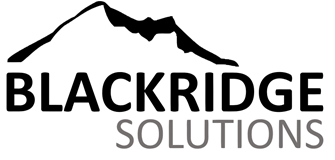About 50 years later, a patent was filed by Koz Ishida for a new gas detection system: non-dispersive infrared (NDIR) sensors. These sensors use infrared light shone through a gas sample at a specific wavelength. The returning wavelength is then analyzed. If weaker, this indicates the presence of hydrocarbon gases that absorb infrared light.
This type of technology has continued to advance, although the foundational principles remain the same. Both of these types of detection technologies — pellistors and NDIR — are used in today’s workplaces.
Until very recently, there have been no significant developments in sensor technology. However, in October 2018, NevadaNano launched a breakthrough in the gas detection industry with the release of the Molecular Property Spectrometer (MPS™) sensor for combustible gases. This sensor is much more accurate than both pellistors and NDIR sensors, resulting in decreased costly and time-consuming evacuations from false alarms. The MPS sensor also detects an unprecedented 12 different combustible gases including acetylene and H2 and is immune from poisoning from substances like silicones (e.g. WD-40) that render other sensors useless. It can also classify the detected gas into various categories, indicating what type of combustible hazard you are dealing with so that proper responses can be initiated.
G7 Cartridges For Complete Lone Worker Safety
G7 is expandable with interchangeable cartridges so you can completely customize your company’s lone worker safety program. The choice of the standard lone worker without gas detection, single-gas, multi-gas, or multi-gas with pump cartridges gives your employees the monitoring capability for every role they need to keep them safe.
Confined Space Gas Detectors
Confined spaces naturally tend to have reduced ventilation, which creates environments where toxicity-related dangers are higher. When workers need to enter a confined space, the G7 multi-gas pump cartridges, with a sampling hose of up to 99 feet, allows workers to check gas toxicity levels to ensure the space is safe to enter.
Visibility into confined space entries around a worksite is also taken to the next level with assisted GPS technology. Each confined space would first be tagged for location mapping, which allows your company to see when and where a worker enters a mapped space. And with the use of location beacons in conjunction with floor plans, visibility of entries is retained even without a direct GPS signal and for different floors or levels. You can also see how long a worker remains in that space and their peak exposure to gas during that time.
Lone Worker Monitoring
Standard G7 cartridges (without gas monitoring) provide your company with real-time situational awareness, functioning as lone worker monitoring devices that amplify personal safety. Team members with G7 wearables are wirelessly connected to the Cloud in location-enabled ways, with complete customization available to maximize lone worker safety.
Uploaded data can easily be leveraged through Blackline Live for the full picture- visualization, record keeping, and analysis.
Expandable Devices
With plug-and-play configurability, a lone worker cartridge without gas detection can be easily swapped for a G7 diffusion cartridge, turning the device into a personal gas detector, including the ability to go from a single-gas to a multi-gas detector for up to five gases.
Plus, the connectivity of this technology means that the device data and gas readings are automatically uploaded in real-time — allowing your workers to be confident that their safety is constantly being monitored.


 RSS Feed
RSS Feed